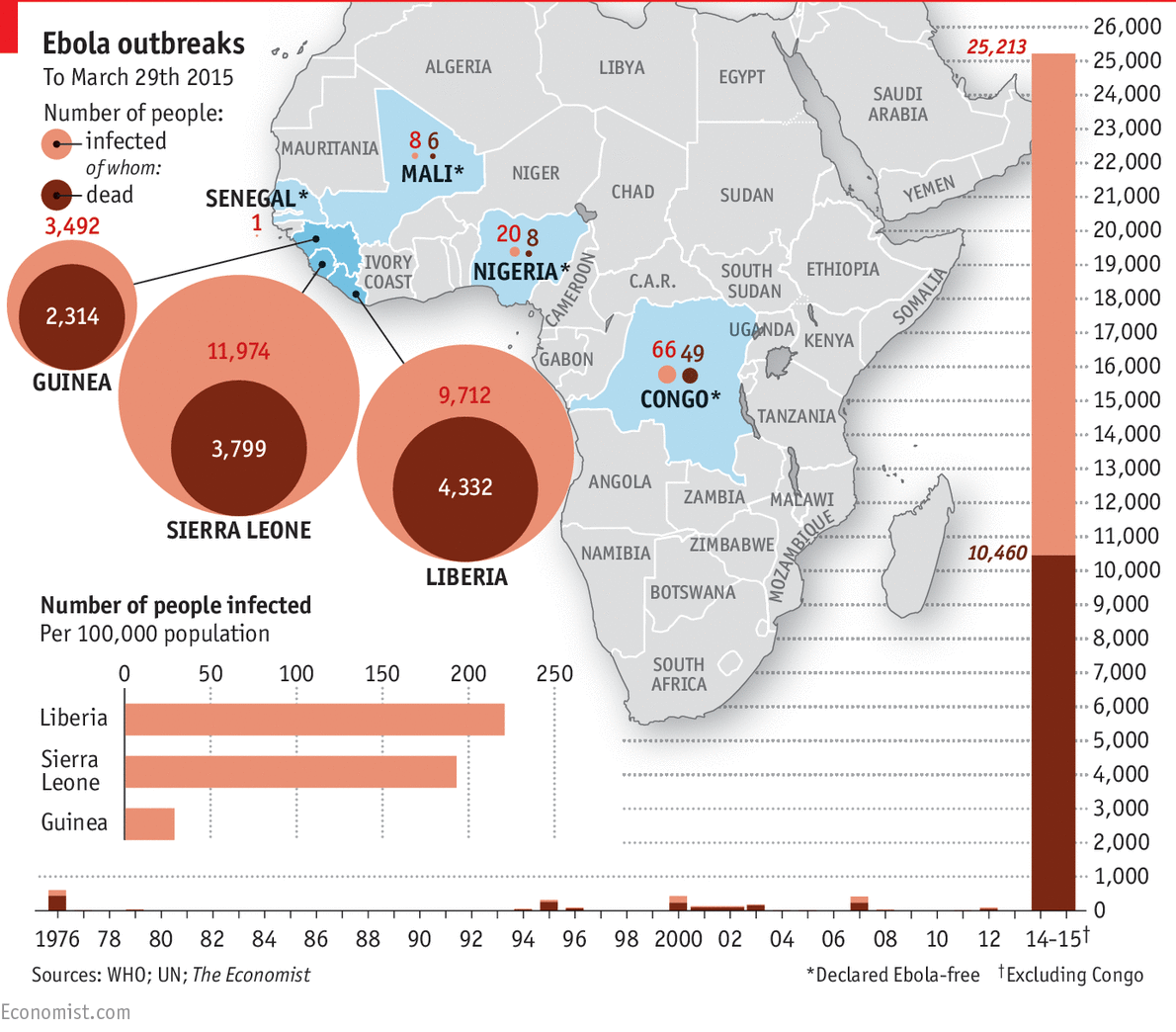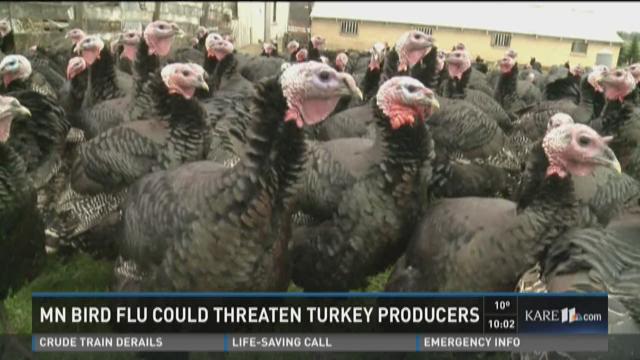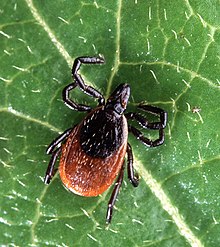New research suggests that a noninvasive technique called antibody-targeted positron emission tomography (immunoPET) can be used visualize HIV reservoirs more effectively than tissue biopsies, the currently employed method. Identifying HIV reservoirs is important not only in understanding the disease, but also in creating targeted treatments that rid the virus in hard-to-detect areas.
In the context of HIV, the immunoPET technique tags specific antibodies with positron emitting radionuclides that react to gp120 - the envelope protein of HIV. These tagged antibodies can later be observed on a screen and pinned to a specific location in the body. In macaques, the immunoPET technique was able to identify where latent HIV resided in antiretroviral treated specimens. In contrast to tissue biopsies that may require samples from areas of the body that are hard or impossible to reach (e.g. gastrointestinal tract), the immunoPET can visualize the virus' location without any physical sample. An additional benefit of the immunoPET technique is that it is an in vivo technique that is capable of revealing trends over time, for example, the path that HIV takes to establish reservoirs in certain areas of the body.
ImmunoPET is already used as in vivo method used in the diagnosis and prognosis of certain cancers and cardiovascular conditions. However, it has not been used commonly in the field of infectious disease. Such a technique is promising for a virus whose evasive mechanisms have eluded researchers for years.
--Andrew Duong
http://www.nature.com/nmeth/journal/v12/n5/full/nmeth.3373.html
Wednesday, April 29, 2015
Rubella Eliminated from the Americas: Good News Amidst Anti-Vaccine Hysteria
On April 29th, 2015, the WHO announced that the Americas region (which comprises all of North/South America except for Greenland) was the first of the WHO-defined regions to completely eliminate rubella. Rubella is now that 3rd vaccine-preventable infection to be eliminated from the United States (after smallpox and polio). While this news comes 5 years later than the original PAHO (Pan-American Health Organization)/WHO plan dictated, this is still a monumental feat. A once-common rash of childhood, rubella has been on the decline over the past 15 years because of the ubiquity of the MMR vaccine. Director General of the WHO Margaret Chan stated that a 3-year Vaccine Action Plan gave the elimination effort the last big push it needed. The last cases of endemic Rubella were reported in Argentina and Brazil in 2009. While rubella is generally not as dangerous as measles, congenital rubella can still cause miscarriage, deafness, blindness and other complications for developing fetuses.
Within the next 5 years, the WHO hopes to solidify a plan (with dates) for the global eradication of rubella and measles. Measles will likely be even more difficult to eradicate because measles is one of the most contagious viral infections known.
In the mean time, they advise parents to keep vaccinating their kids. Let’s hope the anti-vaxxers don’t mess this up.
http://www.upi.com/Health_News/2015/04/29/WHO-Americas-the-first-to-eliminate-rubella/2231430356042/
--Joe
Rubella Virus Eliminated from the Americas
Big news came out today regarding the state of the rubella virus: the Pan American Health Organization (alongside the CDC, UNICEF, and the United Nations Foundation) has now officially declared rubella eliminated from the Americas - the first WHO region in the world to have done so. Although the last endemic case occurred in 2009 in Argentina, the announcement was delayed to ensure that the virus was in fact eliminated since the virus can sometimes persist without being clinically apparent.
Rubella, otherwise known as German measles, is a disease associated with fetal death and congenital defects, including congenital heart failure. In normal, healthy adults rubella rarely gives rise to serious complications; symptoms generally include a rash and fever. However for mothers and their fetuses, the disease can be deadly. To give some perspective, in the United States from 1964-1965, 11,000 fetuses died from factors related to maternal rubella infection, and 20,000 newborns were born with defects.
Rubella is primarily prevented through the administration of the MMRV vaccine, a vaccine that protects against measles, mumps, rubella, and varicella zoster (chicken pox). While experts are optimistic about eliminating the virus in several WHO regions, including the Europe region, eradication of rubella from the world is still a long ways away, as the virus is expected to persist in other regions for some time.
--Andrew Duong
http://www.nytimes.com/2015/04/30/health/rubella-has-been-eliminated-from-the-americas-health-officials-say.html
http://time.com/3840211/americas-eliminate-rubella/
Rubella, otherwise known as German measles, is a disease associated with fetal death and congenital defects, including congenital heart failure. In normal, healthy adults rubella rarely gives rise to serious complications; symptoms generally include a rash and fever. However for mothers and their fetuses, the disease can be deadly. To give some perspective, in the United States from 1964-1965, 11,000 fetuses died from factors related to maternal rubella infection, and 20,000 newborns were born with defects.
Rubella is primarily prevented through the administration of the MMRV vaccine, a vaccine that protects against measles, mumps, rubella, and varicella zoster (chicken pox). While experts are optimistic about eliminating the virus in several WHO regions, including the Europe region, eradication of rubella from the world is still a long ways away, as the virus is expected to persist in other regions for some time.
--Andrew Duong
http://www.nytimes.com/2015/04/30/health/rubella-has-been-eliminated-from-the-americas-health-officials-say.html
http://time.com/3840211/americas-eliminate-rubella/
Wednesday, April 22, 2015
Bird Flu Still Ruffling Feathers in Midwest USA
Since the
tail end up Humans and Viruses II, bird flu has still been on the wing. 6.7 million chickens and turkeys have died
since March. 5.3 million more chickens are still scheduled to be culled in an
attempt to contain the virus. H5N2 tends to be a death sentence for turkeys,
which die almost 100% of the time, whereas the mortality rate is lower (about
60%) in chickens. Thankfully, the virus hasn’t been known to infect humans, but
the USDA is still being extra careful. Many of the deceased birds have been
part of government-sponsored culling. The virus hasn’t had a significant impact
in poultry prices yet. However, despite all of the biosecurity efforts, it
doesn’t show any signs of slowing down.
The virus
may be spreading by wind-carried droppings and feathers. If this is the case,
it poses a formidable risk to wild bird populations. The CDC suspects that at
temperatures of at least 70F, the virus may not spread as well. The USDA is
working on a vaccine for chickens and turkeys; it has passed some testing, but
isn’t ready for commercial use yet. The added cost from vaccinating birds is
probably smaller than having to kill an entire barn and starting over again. At
least birds can’t launch an anti-vaccine campaign… right?
Friday, April 17, 2015
Politics and Vaccines: An Update
Recently, vaccines have been an overly political subject.
The reality, of course, is that this debate is disingenuous, as both the
scientific and medical communities overwhelmingly agree that vaccines are
usually safe and effective. (http://www.nejm.org/doi/full/10.1056/NEJMsa0806477).
When people don’t get themselves and their children vaccinated, diseases on the
verge of elimination can re-emerge and make lots of people sick following the
breakdown of herd immunity. One of the most recent examples of this phenomenon
we talked about was the measles outbreak earlier this year.
While this event was unfortunate, it did reinvigorate the
political debate surrounding vaccine exemption-related legislation. California
Senate Bill 277 is a new bill that would require children to be up to date on
their vaccine schedule (i.e. not allow parents to cite personal belief or
philosophical exemptions to get their kids out of vaccinations) in order to
attend primary school. The state senate has decided to delay the vote.
Unfortunately, the opponents of the bill have been much more vocal than the
proponents: they spoke for 4 hours in comparison to the proponents’ seven
minutes. Hundreds of parents testified that the vaccines hurt their children. One
of the consequences of passing a bill could be a massive withdrawal of children
from school.
Naturally, the opponents cite some faulty logic.
Many of the votes for the bill have come from Democrats, so
the bill could become partisan. However, the committee chair (Carol Liu, D-La
Cañada-Flintridge) stated that the bill needed to be “cleaned up” so that it
can be voted on again “in a few days.”
Here’s a good video covering the hearing: http://www.breitbart.com/big-government/2015/04/17/vaccine-vote-delayed-in-sacramento/
And some other links:
Meanwhile in Oregon, nonmedical vaccine exemption rates have
declined for the first time in 15 years. The Oregon State Senate is voting on
Senate Bill 895. Unlike California’s bill, it would not prevent parents from
obtaining nonmedical exemptions, but it requires schools to public their
exemption rates on report cards. It would also force parents who want to use
nonmedical exemptions to consult a health care provider on the risks and
benefits of vaccinations. Currently, there are videos produced by the Oregon
Health Authority that these parents can watch. If this bill passes, the videos
will no loner count as a form of informed consent (although they will still be
available).
Back on the East Coast, New Jersey Governor Chris Christie
(R-NJ), expressed his full support of childhood vaccinations, shortly after saying
during a tour of the UK that parents should have a “measure of choice.”
--Joe
Tuesday, April 14, 2015
Chicago Dog Owners Having a Ruff Time Dealing with Emerging Canine Flu
Recently, cases of a virus that had never been recorded in
the US afflicted over 1,000 dogs in Chicago, and killed 5 of them (0.5%
mortality rate). About 5-10% become severely ill. The strain, influenza A H3N2,
had been making dogs sick in Hong Kong and southern China since 2006, but
nobody knows how it got to the United States.
There is a vaccine available for a different strain of
canine flu (H3N8), but veterinary professionals in the area aren’t convinced
that the vaccine would offer enough protection against the new strain. Since
canine influenzas aren’t especially common, most dogs don’t have any immunity
to them. This Asian strain may be more transmissible than the old strain, and
doesn’t cause symptoms (but is easily spread from) in about 20-25% of affected
dogs. The symptoms that the rest of the infected dogs usually get include
coughing, lethargy, lack of appetite, fever, nasal discharge, and labored
breathing.
Unlike the H3N8 strain, H3N2 is can
also infect cats and cause similar symptoms. Although it hasn’t done so in Chicago, it has made a lot of cats
sick in Hong Kong and in China. The canine flu doesn't pose any known risk to humans, but Chicago veterinarians are recommending that dog owners reduce their dogs' contact with other dogs and get vaccinated for H3N8 if they aren't already.
--Joe
Monday, April 13, 2015
New Antibody Treatment for HIV
A new drug incorporating monoclonal antibodies to fight HIV has shown preliminary promise. The antibody, developed by a group of researchers at Rockefeller University in New York City, binds to HIV, rendering it unable to infect cells. The antibody is known as 3BNC117, a special antibody produced by a minority of people with HIV (10-30%) that is particularly well-suited to fend off HIV. In combination with other treatments, the 3BNC117 antibody could potentially confer additional resistance against HIV.
In the study, viral load of infected patients injected with high doses of the antibody significantly decreased for 28 days, with few adverse side effects. Such research is promising because antibodies can offer long-lasting protection against HIV, with booster doses needed only every few months. One potential downside of this treatment is cost - the costs of these antibodies are higher than existing HIV treatments. Still, having monoclonal antibodies against HIV as an option to supplement existing treatments may provide individuals with the best available care. Moreover, for individuals who have developed resistance against antiretroviral drugs, the antibodies can be a second pass at warding off the progression to AIDS.
Finally, it is important to note that the study was only a Phase I treatment, meaning that the conclusions drawn are very preliminary due to the small sample size (12 people without HIV in the control, and 17 infected individuals).
Source: http://www.cbsnews.com/news/hiv-immunotherapy-treatment-shows-promise/
--Andrew Duong
In the study, viral load of infected patients injected with high doses of the antibody significantly decreased for 28 days, with few adverse side effects. Such research is promising because antibodies can offer long-lasting protection against HIV, with booster doses needed only every few months. One potential downside of this treatment is cost - the costs of these antibodies are higher than existing HIV treatments. Still, having monoclonal antibodies against HIV as an option to supplement existing treatments may provide individuals with the best available care. Moreover, for individuals who have developed resistance against antiretroviral drugs, the antibodies can be a second pass at warding off the progression to AIDS.
Finally, it is important to note that the study was only a Phase I treatment, meaning that the conclusions drawn are very preliminary due to the small sample size (12 people without HIV in the control, and 17 infected individuals).
Source: http://www.cbsnews.com/news/hiv-immunotherapy-treatment-shows-promise/
--Andrew Duong
Sunday, April 12, 2015
A Pow-erful Tickborne Virus
Spring is a great time of year. Flowers and birds come out,
the days get longer, and the days get longer. Of course, there are some
unfortunate parts about spring as well, like pollen, caterpillar rain, and
ticks. We’ve briefly addressed ticks as disease vectors, but they can transmit
some nasty diseases, including one that has been making headlines recently.
Powassan virus is a recently discovered flavivirus. While Powassan has been
known since the early 2000’s, it is still thought of as an emerging infection
because the number of recorded fatalities associated with the virus has been on
the rise to 15 in 2013. The virus has a higher mortality rate than Lyme disease
(about 11%), and its symptoms can include vomiting, seizures, encephalitis, and
meningitis. About half of the people infected suffer from lasting neurological
symptoms.
There are no vaccines or antivirals for Powassan either. The
CDC says that the best way to avoid the virus are to reduce your exposure to
ticks: avoiding wooded or bushy areas, wearing long sleeves and pants if you do
go in a woody or bushed area, using bug repellent and checking your body for
ticks when you come inside.
Thankfully, the virus is still relatively rare. Most of the
cases have occurred in the Great Lakes regions of the US and Canada. However,
this year it has been found in Connecticut, Virginia. Unlike with Lyme disease,
a deer tick doesn’t need to be on your skin for very long to transmit the
disease, so be careful when you hike this spring!
--Joe
Monday, April 6, 2015
Ebola: Looking to Year 2 of an Epidemic
Ebola back in Sierra Leone, Just Won't Go Away in Guinea
The first cases of the Ebola Zaire virus fueling the current
outbreak occurred in March 2014: over a year ago. While an outpouring of
international aid helped contain the outbreak, there’s still a lot of work left
to do. Over 10,000 people have died from this nasty hemorrhagic fever, and
still the death toll is rising. On April 1st, Sierra Leonean
officials found 10 new cases during a 3-day countrywide shutdown. While this is
much fewer cases than before, ideally no new people would become infected.
Guinea is faring worse: 82 new cases occurred in the
week of March 22nd alone. Guinea is larger than Sierra Leone, and
has a more developed public health system; however, this has actually led to
less behavior change than would be ideal for the containment of the outbreak.
Liberia’s hasn’t had any new cases recently; the country
lifted its Ebola curfew 2 weeks ago, and it is on its way to “Ebola-free”
certification. The economic damage has been profound, but the country is
recovering. One article writes about its rebounding nightlife. (http://www.thedailybeast.com/articles/2015/04/05/liberia-s-nightlife-is-back-post-ebola.html)
Ebola at a Glance: Some helpful graphics
 |
| A map depicting days since the last recorded Ebola case http://www.economist.com/blogs/graphicdetail/2015/04/ebola-graphics |
 |
| Ebola in West Africa: Death Toll by Country, from http://www.economist.com/blogs/graphicdetail/2015/04/ebola-graphics |
A Promising Vaccine
In related news, the experimental vaccine seems to be doing
well in clinical trials. The New England Journal of Medicine (http://www.nejm.org/doi/full/10.1056/NEJMoa1414216?query=TOC)
reports that in a recent trial, 100% of the subjects developed a strong immune
response and didn’t show any serious side effects. Nonhuman primates who were
subsequently exposed to the virus didn’t develop symptoms.
The vaccine described is a recombinant vesicular stomatitis
virus, a rhabdovirus that affects insects and livestock, and can lead to a
zoonotic flu-like illness in humans. The engineered virus is attenuated but
replication-competent. It expresses the glycoprotein from the Ebola Zaire virus
instead of the native VSV glycoprotein. Time will tell if the vaccine will help
contain the outbreak, but the initial studies look promising.
--Joe
Subscribe to:
Posts (Atom)




